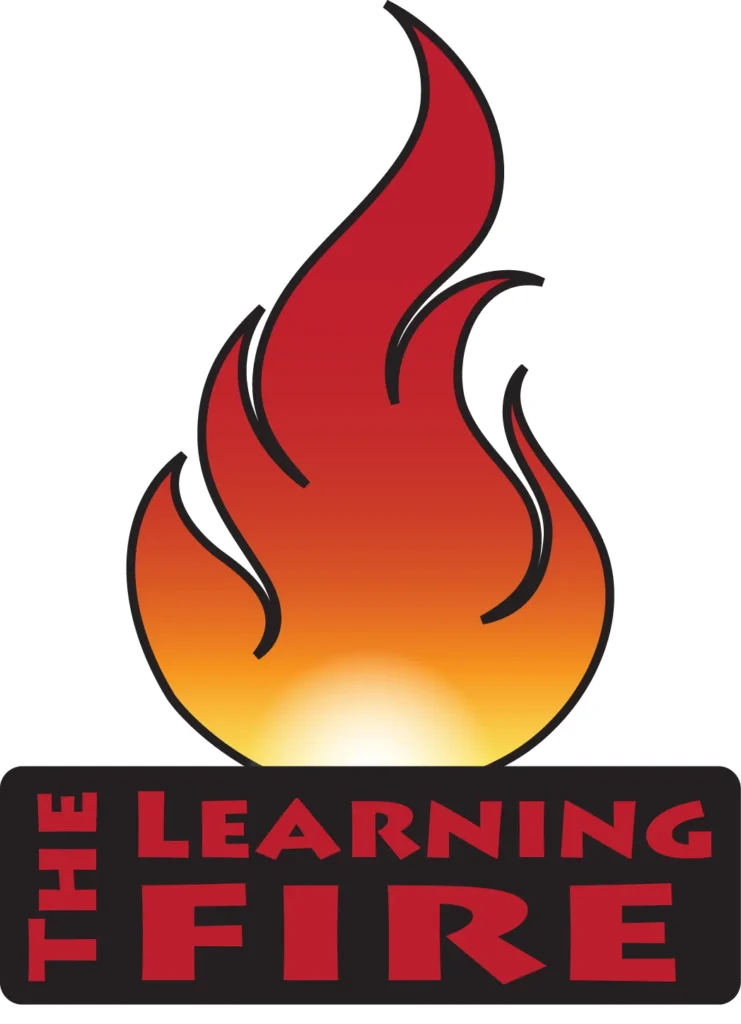
The fire symbolizes a gathering place where knowledge is shared, wisdom is passed down, and generations connect. It represents the continuity of knowledge and the dynamic, shared nature of learning.
Origins and Philosophy
The Learning Fire was born from a collaboration between founders who sought to bridge traditional Indigenous knowledge with modern scientific understanding. Drawing significant inspiration from the Smarter Science framework, which emphasizes inquiry-based learning, the Learning Fire has evolved into a comprehensive educational model that honours Indigenous wisdom while embracing contemporary scientific approaches.
The LEARNING Fire: An Introduction
The LEARNING Fire is an innovative educational framework developed by the Turtle Island Center for Excellence in Environmental Research & Education (TIC). It represents a holistic approach to education that integrates Traditional Ecological Knowledge (TEK) with Western scientific principles, creating a unique and culturally responsive learning environment.
The LEARNING Fire Framework
The framework can be remembered through the acronym LEARNING:
L – Land-based
Education is rooted in the land and environment, fostering a deep connection to place and ecological consciousness.
E – Elders and youth
Intergenerational knowledge transfer is central, with elders and youth working together in educational settings.
A – Aspirational
Learning is guided by Aboriginal superheroes, Elders, and Wisdom Keepers based on the Seven Teachings, inspiring students to higher achievements.
R – Reality/Virtuality
The virtual world mirrors real geography, allowing students to explore and build environments tied to their location.
N – Nurturing
The approach nurtures holistic development, including spiritual, emotional, physical, and intellectual aspects.
I – Inquiry-based
Learning is driven by curiosity and discovery, encouraging students to ask questions and seek answers.
N – Networked
Learners collaborate in real-time, building a shared knowledge web and community.
G – Growth-oriented
The framework tracks progress from novice to expert across multiple dimensions of learning and thinking.
Curriculum Components
The Learning Fire includes specific curriculum components that reflect seasonal learning and cultural significance:
Thirteen moons are the lens through which young people are taught.
Here are two examples:
- Miskwaadesi Giizis (Turtle Moon): A core curriculum component that aligns Indigenous knowledge systems with scientific understanding through targeted lessons and activities.
- Biboon Giizis (Winter Moon): A seasonal learning approach that explores cultural significance and scientific principles through hands-on activities and virtual components.
Educational Approaches
The Learning Fire employs several distinctive educational approaches:
- Culturally Responsive Assessment:
Assessments that are community-based and reflect Indigenous values, moving away from standardized testing. - Coding and Digital Skills:
Progressive development of coding skills from beginner to advanced levels, supporting Canada’s digital labour needs. - Exploratory Learning:
Quests that involve identifying real-world plants, documenting nature, and uploading findings to the virtual world. - Collaborative Projects:
Elder-youth educational projects that facilitate meaningful intergenerational knowledge transfer and hands-on learning experiences.
Measuring Learning
The Learning Fire uses a comprehensive approach to track and evaluate learning:
| Dimension | Description |
|---|---|
| Problem-solving | Ability to identify and address challenges |
| Creative thinking | Generation of original ideas and solutions |
| Evaluation | Assessment of information and outcomes |
| Analysis | Breaking down complex information |
| Interpretation | Making meaning from information |
| Reasoning | Logical thinking and argumentation |
Progress is tracked on a developmental scale from Novice to Expert, with real-time reporting linked to curriculum outcomes.
Future Vision
The Learning Fire is an evolving framework that continues to adapt to meet the challenges of a changing world. Its vision includes:
- Building resilience in educational systems and learners
- Leveraging technology to preserve and advance traditional knowledge
- Expanding partnerships and innovations to ensure relevance and impact
- Fostering sustainability and ecological stewardship
Conclusion
The Learning Fire represents a transformative approach to education that honors Indigenous ways of knowing while embracing modern educational tools and methods. By creating a space where elders, youth, educators, and community members can gather to share knowledge and learn together, the Learning Fire ensures that the wisdom of the past continues to illuminate the path forward for future generations.
The Learning Fire is not just an educational framework; it is a call to relearn how we teach and learn, shifting from rigid, prescriptive models to flexible, adaptive approaches grounded in community and culture

